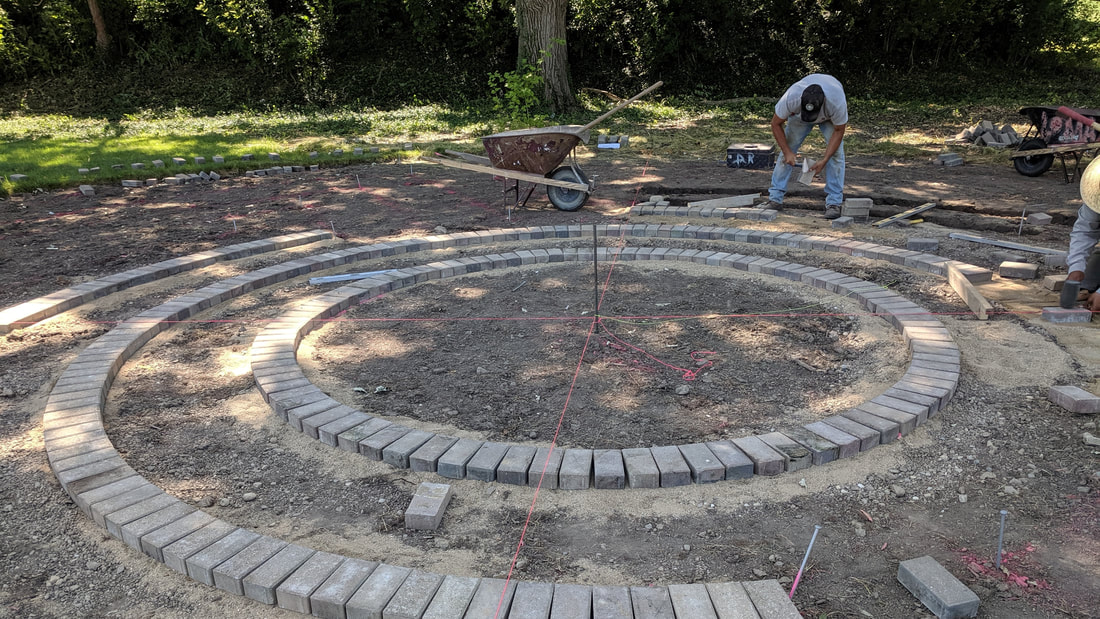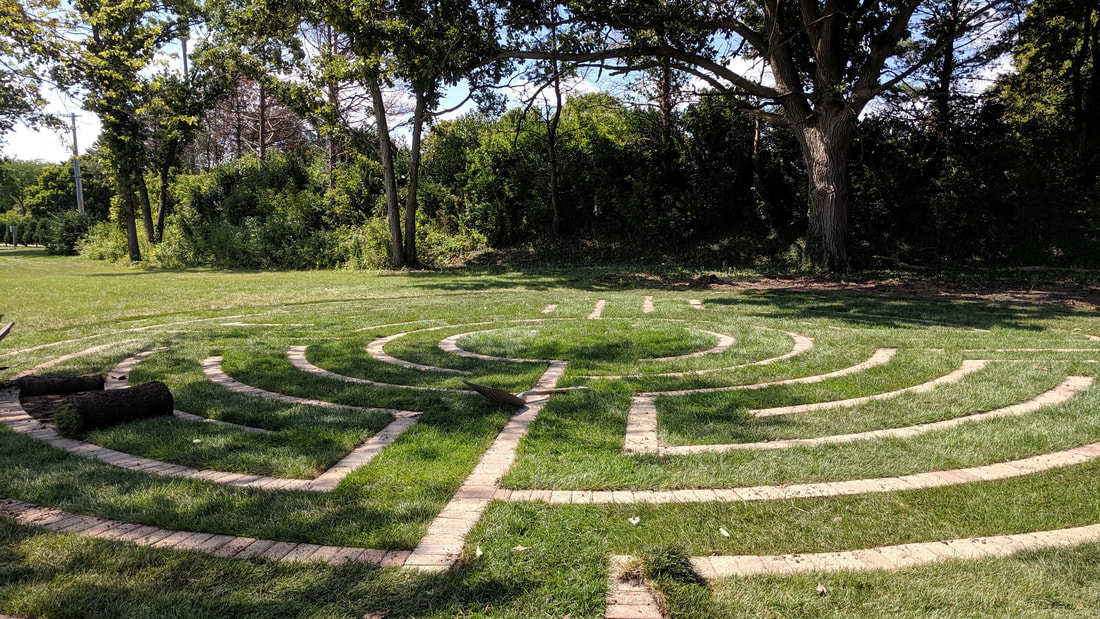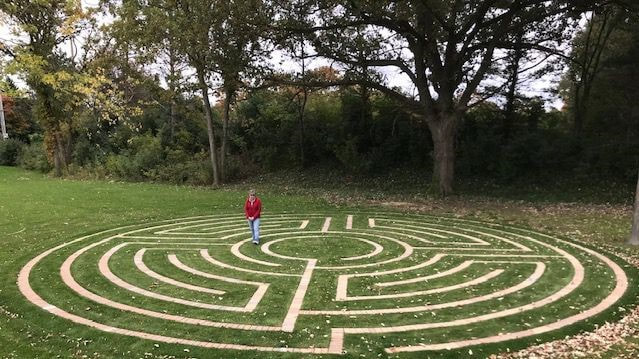An Invitation to Walk
|
The labyrinth may be a set path, but it does not offer a set experience. Instead, it offers a door that anyone may go through, to discover realities that meet each person where each most needs to be met.
-- An Altar in the World, Barbara Brown Taylor |
|
What is a Labyrinth?
A labyrinth is a circular pattern with a circuitous pattern within it. It is one continuous path, intended for meditation and reflection. The path invites you to deeply relax without the need to focus on where you are going--you simply have to take the next step.
|
Benefits of Walking a Labyrinth
Walking the Labyrinth quiets the mind, opens the heart and grounds the body ... Some find answers to questions long asked, some find healing, creativity, a sense of wholeness.
|
How to Walk a Labyrinth
There is no right or wrong when using a labyrinth, but rather what feels right at the time of your labyrinth experience. That being said, below are some guidelines to get you started on your path through the Labyrinth.
|
Guidelines for Walking the Labyrinth
|
|
Purgation
As you enter the labyrinth, release, let go of the details of your life. Shed extraneous thoughts and distractions. Open your heart and quiet your mind. |
Illumination
When you reach the center, stay as long as you like. It is a place of meditation and prayer. Receive what is there for you to receive. |
Union
As you leave, following the same path that brought you there, join with God and find empowerment to do the work you have been given to do. |
Options for Going Deeper
|
Pay attention to the feeling of each breath and become aware of each step of your feet and the natural sway of your body as it walks.
|
Use a prayer mantra: “God is Love”, “Lord Jesus, Son of God, have mercy on me”, “Peace”, or “Shalom”, or whatever words of prayer come to you.
|
Reflect on all you are grateful for, listing the things in your life at first and step by step melt into a constant state of gratitude as you walk.
|
Recall your life journey, allowing memories to bubble up. Trust that you are always in God’s eternal memory.
|
A Brief History of Labyrinths
|
Ancient Cultures
Archeological findings date labyrinths to the Bronze Age (about 4000 years ago) when simple 7-circuit designs began showing up in Europe, the Middle East and parts of Asia as carvings and drawings on clay tablets, stone walls and coins. Greek and Roman mythology suggest the labyrinth functions as both a place of rebirth and protection.
|
Medieval Europe
Labyrinths began to appear in the Middle Ages in churches in Europe. They functioned as a symbolic substitute for making a physical pilgrimmage to the holy land; a time-honored journey for achieving spiritual and psychological renewal. The most famous of these labyrinths was inlaid into the floor at Chartres Cathedral in France in 1201 A.D.
|
Modern Resurgence
In the 1970’s a renewed interest in labyrinths began to surface in Europe. In the 1990s, labyrinths began popping up all over the US. Rev. Lauren Artress, Canon at Grace Cathedral in San Francisco as she helped people rediscover this ancient cont
|
Source: Relax4life.com. 2020. Information, Ideas And Activities With Labyrinths. [online] Available at: <http://www.relax4life.com/wp-content/uploads/2017/11/booklet-11-8-1-1.pdf> [Accessed 27 May 2020].1/booklet-11-8-1-1.pdf.


